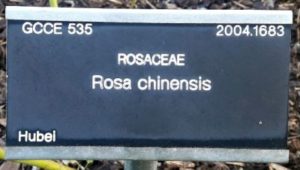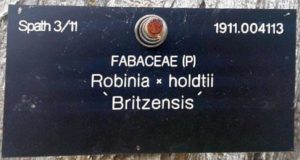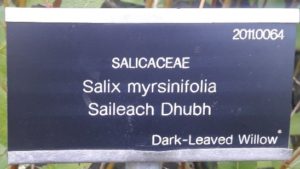FAQ
A Miscellany of Information
We handle hundreds of enquiries each year, but here are some answers to some of the most frequently asked questions. If you can’t find what you are looking for, get in touch!
Please use the main menu above to find out about opening hours and how to find us (accessibility information is also on this page, as well as car parking details). You will also find the history section, café page, and calendar of events clearly marked.
The Gardens primary role is as a scientific collection. As a consequence we do not allow dogs, picnics, bicycles, fishing, ball games, jogging or running, nor the playing of musical instruments or recorded music.
What is a ‘botanic’ garden? What’s the difference from any other public garden?
Generally, a botanic garden grows plants because of their scientific interest; a garden grows plants for their aesthetic appeal. This scientific interest can be at many levels; most importantly a botanic garden keeps a record of from where and when plants arrived in the garden, and where they are growing.
By keeping a wide range of species and cultivars, the collection can be used for reference (to help identify plants), education (illustrating an interesting fact about botany or the way in which a plant is important to people), conservation (we grow many rare and endangered species, not only from Ireland but from all over the world), science (the biology of many species is still poorly known and understood, and a number of new species have even been described from within the living collections at Glasnevin), horticultural (learning how to grow scarce or difficult plants is important for furthering our knowledge of plants), and lastly, we never forget that many plants are beautiful for their own sake, and the amenity value of the collections is always considered.
Why do you use Latin for plant names? What’s wrong with common names?
So-called ‘common names’ are unreliable and imprecise. For example the plant we call a bluebell (or coinnle corra), is not the same one the Scots call a bluebell (they use the name for what we call the harebell). They are different and unrelated plants which belong to two different families. Hundreds of years ago botanists chose the Latin language as a standard and universal way of naming plants throughout the world. Following the Linnaean system, each unique plant name is in two parts – a genus followed by a specific name that together gives the species name. In that way, not only does the plant name have worldwide usage, but it also tells you that plants in the same genus are related to each other and probably share the same horticultural needs.
Our labels give further valuable information about the plant. Every plant label will have a family name (in capitals) immediately above the plant name and an Accession number in the top right corner that links to information on our database as to where and when we originally obtained the plant.
- Label for a wild collected species. The family name is given in capitals, the species name below that, Top-right is our accession number which allows us to store all the information on our database. Top left is the collection number: ‘Glasnevin Central China Expedition 2004, #535’. bottom left is the prvince of China the seeds were collected in: Hubei.
- Label for a cultivar, or cultivated variety of plant. A cultivar name is put in single inverted commas. Top left is the source, in this case: Späth nursery in Berlin in 1911, from where it arrived in March.
- Label for an Irish native plant. This is the only time we use a ‘common name’ on a label. Below the scientific name we have the Irish name, in the bottom-right is the English common name.
Who funds the National Botanic Gardens?
The National Botanic Gardens are a public institution that is operated by the Office of Public Works. Entry is free, but we have a small charge on the car park.
Are dogs allowed?
Dogs are prohibited in the Glasnevin, with the exception of guide dogs. At Kilmacurragh, dogs are allowed, so long as they are kept on a lead at all times.
Are bicycles, scooters, skateboards, etc. allowed?
Bicycles, tricycles, roller skates, skateboards, micro-scooters, balance bikes and other vehicles (except powered wheelchairs) must be left at the gates. There are bicycle racks and spaces available to store these vehicles securely.
Are games and sports allowed?
To protect our collections, ball games and sports (including jogging) are not allowed in the Gardens.
Can I buy plants?
Regretfully we are not able to sell plants.
Can I hold my wedding in the National Botanic Gardens? Can I arrange wedding photographs?
Wedding catering is not possible at the Gardens, however, wedding photography is a long tradition at the Gardens and is permissible.
Can I hold a meeting, conference or lecture at the National Botanic Gardens?
We have a wide range of quality facilities in unique surroundings available for meetings, conferences and lectures, at our Glasnevin site. Please contact the Visitor Centre for further information.
Can you identify a plant for me?
There is a limited plant and fungi identification service in Glasnevin provided for specimens sent by post to the Herbarium (Herbarium, National Botanic Gardens, Glasnevin, Dublin 9). Plants or fungi brought in for identification should be left at the Visitor Centre and collected later if required. Old varieties of apples, roses, and daffodils, as well as a number of other cultivated plants can be difficult, and it not always be possible to identify these.
Can you give me horticultural advice?
There is a limited advice provided for enquiries made in person or by telephone. Our specialist staff have accumulated considerable knowledge and expertise over the years, but they are not always available to give specific advice ‘on the spot’. Please be patient when contacting us for advice, and remember that there are many other sources of horticultural information available. Try, for example, the Royal Horticultural Society’s website – https://www.rhs.org.uk/
Are there still red squirrels in the National Botanic Gardens, Glasnevin?
Until recently we often had red squirrels feeding on the ground, especially around Pine Hill. Since 2005, however, they have not been seen. Red squirrels are displaced by the introduced grey squirrels, which are able to eat unripe nuts, thus out competing the red squirrels by eating most of the food resources before they are palatable to the reds. The spread of pine martens across the country is often a forerunner of red squirrels successfully making a comeback so they may return from the populations on Howth Head and Killiney Hill. Although the grey squirrels are delightful to watch, please remember that they are wild animals – not pets, they can bite and scratch.
Can I take photographs of the plants in the Gardens? Can I film in the Gardens?
You are welcome to take photographs for your own use. All filming and photography at the Gardens for commercial purposes, however, is by permit only. Details of any requests for filming or photography should be addressed to the Director in advance.



